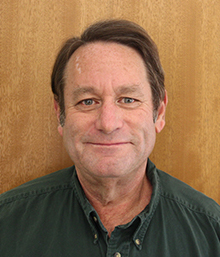The American home is an evolutionary item. In Platte County, we’ve gone from log cabins to frame with sheet rock and siding nailed on. Granted we’ve laid some brick into the housing mix, too. Here and there you’ll find a rare stone structure. Are there housing styles that fit the future in more sustainable ways and provide retro-fit options for older houses? Yes.
I’ve been throwing out the welcome mat for housing innovators in newspaper columns for a long time. I recognize that building costs versus what consumers want in price, style and function makes housing innovation difficult, but we know it can be done. And the people who get it done build a better future.
Some examples come from the past.
National Public Radio (NPR) this week aired a story about homes built by developer Joseph Eichler in California in the decades after World War II. Eichler’s goal was to build nice, livable and affordable houses available to everyone. His houses were simple, lots of open spaces, lots of glass, clean lines and did not have a boxy feel.
The original model cost $15,000. A home purchased by a couple quoted in the story cost $30,000, back in the early 1960s. Inflation, land prices, labor costs and material costs make those housing prices seem like a dream today. Even if back then they were aimed at an “affordable” market.
But a key point is that Eichler found a way to build a new type of house that offered quality to those willing to try something new.
Most of us want a house with good natural light during the day, warmth in winter and coolness in summer, and a place to plug in lots of electric-powered gizmos. Energy — costs and environmental sustainability — are issues now and for the future.
But engineers and inventors are always at work. They are architects for change.
Most homes will have solar panels on roofs to generate electricity by 2030, said a recent story by Keith Chrostowski in The Kansas City Star. The question asked in the story is will homes generating their own power send utility profits into a downward spiral?
I agree with those who say it will not, totally.
But I think the future will be built around homes and businesses generating a lot of their own power. First will come a mix of solar, wind and maybe even water. Then may come some kind of generators powered by fuels and designs from things we’ve yet to discover or figure out.
But already, The Star story said, solar panels are becoming more efficient and affordable. Ditto people tinkering with wind power generation.
I was in Alaska a few years ago and visited a lodge where all electricity came from a wind generator and batteries. A major storm set the generator howling in the wind. Those readers who grew up on farms where windmills creaked in the wind while they pumped water might relate.
Alternative energy methods often have a down side, but they are surely a supplement to the future, if not the whole future.
Who would ever have dreamed in 1963 (besides Dick Tracy wrist radios) that we’d consider talking on cell phones with no connection wires and chords to be a common everyday thing?
I was intrigued recently by a magazine story about turbines placed in water lines to generate electricity from water flow. A sewage treatment plant was covering much of its power costs with the system.
I did some online checking and found Portland, Ore., is experimenting with a system in its drinking water lines.
That made me wonder about houses.
You can find almost anything discussed online now and I found this debate that took place in an Internet forum. Some were pessimistic about home systems, others optimistic about turbines in strategic locations contributing to a grid along with solar and wind.
I’d say anything is possible.
The founders of Platte County about 176 years ago would never have dreamed every home would be linked by electric lines, that light would come on with a flip of a switch, and that electricity would make a person have to decide between a television or a computer for diversion.
I hope innovators willing to try new, sustainable, affordable home designs come to Platte County. Affordable will be the toughest challenge, but Eichler found his buyers in California.
I’d like to think we can be just as culturally and engineering cool here, too.
Bill Graham, who lives in the Platte City area with his family, may be reached by e-mail at editor@plattecountycitizen.com.


